Reaching my spot in the woods that morning, I had no illusions about my chances of seeing a legal buck.
My first three years, I had come up empty-handed. My fourth year, I had gotten lucky. This was my fifth year. Given that only one in eight Vermont hunters tags a whitetail each autumn, I had no right to expect that I’d bring home venison two years in a row.
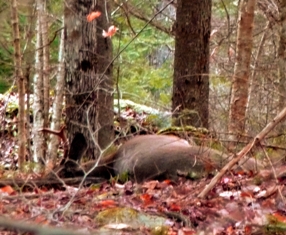 On opening weekend of rifle season, I had hunted almost every daylight hour. And I had seen more deer than usual: one doe and one young buck who was probably a spikehorn, both illegal under current regulations.
On opening weekend of rifle season, I had hunted almost every daylight hour. And I had seen more deer than usual: one doe and one young buck who was probably a spikehorn, both illegal under current regulations.
This morning, though, and for the rest of the 16-day season, I’d only get out for the odd hour or two: almost certainly not enough time for a buck to come my way. I set my pack on the ground and sat down, my back to the half-rotten stump of a fallen maple. It was already getting light, sunrise not far off.
Four minutes later, I heard a deer coming.
The hoof steps were to my right, my view blocked by the brushy branches of a fallen hemlock.
When I saw the buck, he was already close, moving at a brisk trot, and one glance told me he was no spikehorn. He was crossing the slope behind me. There was no way to turn without being seen. I had to hope he would cross all the way behind me and offer a shot to my left.
No such luck. Just fifteen yards away, he looked in my direction, wheeled, and charged back the way he’d come. Having nothing to lose, I stood and turned to watch him go. Even at that close range, I wasn’t going to shoot at a running deer; the chances of a wounding shot were too high.
Thirty yards off, he turned to look back. I knew he’d be there just a moment.
There was no time to think through the shot, let alone brace against a tree for the kind of steadied aim I prefer—I’m a slow, deliberate hunter, not a quick, offhand shooter. There was just that one second to bring the rifle to my shoulder, see that his shoulder and front ribs looked like a barn door (something I could hit), decide that the bullet’s path was clear of branches, and fire.
The buck dropped in his tracks and lay still.
I stood there, stunned: by how fast it had all happened and how unlikely it all seemed.
Naturally, it could be explained. As I hiked in—tromping through crunchy, frozen leaves, making more noise than a moose—the buck must have been too far away to hear me, or making too much noise himself. The timing was pure coincidence. And his almost immediate pause and backward glance—a common behavior among mule deer, I gather, but less usual among whitetails—must mean that he’d scented but not seen me, and was curious to know where I was.
But that isn’t the only way to see it. Many indigenous hunting cultures say that animals “offer” themselves as a “gift” to the hunter. From a Euro-American perspective, this sounds like mere metaphor, perhaps aimed at making humans feel better about killing. Of course animals don’t “give” themselves to hunters. How ridiculous.
Or is it?
In his article “The gift in the animal” (American Ethnologist, Vol. 34, No. 1, 2007), anthropologist Paul Nadasdy argues that aboriginal accounts of hunting might be literally true. Among other evidence corroborating the views of the Kluane of the Southwest Yukon, he recounts how a rabbit escaped from one of his snares, then tried to get into his cabin five days later, with the snare wire still around its neck. It made no effort to flee as he picked it up and killed it.
What if Nadasdy is right? What if the Kluane view of nature and animals is as valid as the one I grew up with? What if there was more than chance at work in my encounter with that buck, more than a quirk of curiosity in his fatal pause? How would that change my hunting and the meaning of it?
There are dangers, of course, in lifting concepts like “animal” and “gift” off the surface of another culture. It can be rather parasitic. And we’re unlikely to understand what the concepts mean in the depth of their original context.
So let’s bring it down to earth and closer to home.
In essence, northern hunting peoples such as the Kluane understand animals to be “sentient and communicative persons,” as Nadasdy puts it. They see animals as beings who deserve respect, who are capable of feeling, suffering, and consciously interacting with each other and with humans.
In our own culture, how might we—hunters and non-hunters alike—tackle the challenge implicit in that view? How might we hold both the concept of animals as conscious fellow creatures and the concept of animals as food?
Humans, after all, are like that, too: conscious (more or less), yet ultimately consumable. Recyclable.
© 2010 Tovar Cerulli
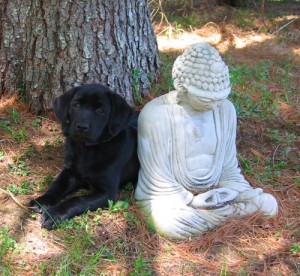

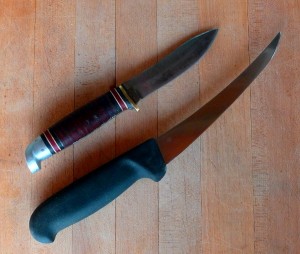 I add the slab of venison to one of the 13×9 pans on the kitchen counter.
I add the slab of venison to one of the 13×9 pans on the kitchen counter.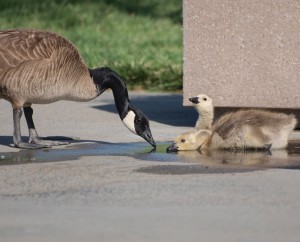
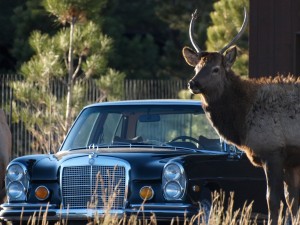
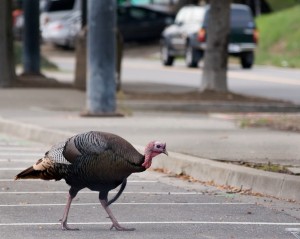
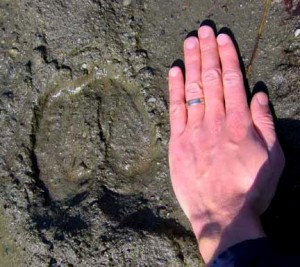
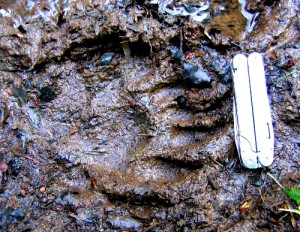
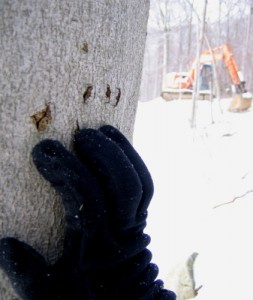
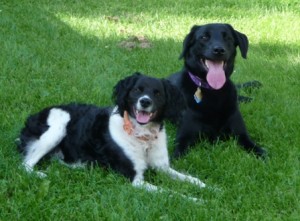

 On opening weekend of rifle season, I had hunted almost every daylight hour. And I had seen more deer than usual: one doe and one young buck who was probably a spikehorn, both illegal under current regulations.
On opening weekend of rifle season, I had hunted almost every daylight hour. And I had seen more deer than usual: one doe and one young buck who was probably a spikehorn, both illegal under current regulations.